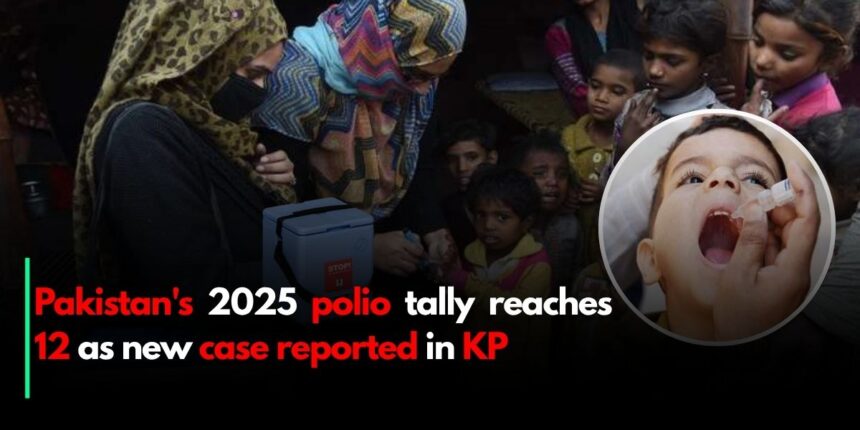This week we saw yet another new case of wild poliovirus in the Bannu district in Khyber Pakhtunkhwa, and it is becoming so, so difficult to eradicate polio in Pakistan. The total in Pakistan now rises to 12.
Details on the most recent case
The Regional Reference Laboratory of NIH Islamabad reported that the boy is 33 months old and lives in the Shamsikhel Union Council. This year, Khyber Pakhtunkhwa has detected six cases of polio.
Reports say that the baby was paralysed in their lower limbs, which is a sign of poliomyelitis.
There were 12 cases of polio in Pakistan in 2025.
The most were in Khyber Pakhtunkhwa (6), Sindh (4), Punjab (1), and Gilgit-Baltistan (1).
The most recent rise in the area is that Bannu has become a polio hotspot, which makes it harder to get rid of the disease.
The national health minister said that polio cases had gone down by 99% over the long run. But the current spike from one instance in 2021 to 74 in 2024 illustrates that the fight is far from over.
National Campaigns Still Going On
There were three nationwide vaccination efforts in February, April, and May to stop the spread. They benefited more than 45 million kids who were five years old or younger. More than 400,000 people took part in this initiative, and 225,000 of them were women who gave out vaccines.
In southern KP areas like Bannu, the rates of immunisation are still not the same. People have missed or been late for their vaccinations for a number of reasons, such as not being able to get to them, being afraid of the vaccine, or not being able to get to them.
The Way to Immunity
Health officials say that getting more than one dose of the oral polio vaccine and sticking to the regular immunisation schedule are both highly important for staying safe. The Polio Eradication Program asks all parents to make sure their kids under five get all of their vaccines on time.
Getting every dose of the vaccine without missing any helps your body fight against disease and lowers your risk of being paralysed for life. People in the community need to be involved in and trust public health services for the programs to keep continuing.
The Big Picture
Pakistan and Afghanistan remain the last countries with wild poliovirus transmission. In the 1990s, globally, there were approximately 20,000 polio cases. In comparison, there were only eight cases in 2018. It should be noted that the development of infections in Pakistan demonstrates that as people have been unable to sustain their work, the virus could pose even greater challenges again.
There are still big problems with false information about vaccines, threats from militants against health personnel, and not enough infrastructure.
Last Word
Polio continues to persist in Pakistan and with the latest case of polio diagnosed in Bannu, the cases rise to 12 in 2022. There is urgency in the need for routine immunisation, improving accessibility of populations at risk, and rebuilding trust within the communities.
The challenge remains for parents, community leaders and health workers to work with concerted effort to keep vaccination campaigns on track. It is this kind of collaboration for the work currently in progress, but also toward a country free of polio in the future, that will combat any ignorance the community has toward routine immunisation.










